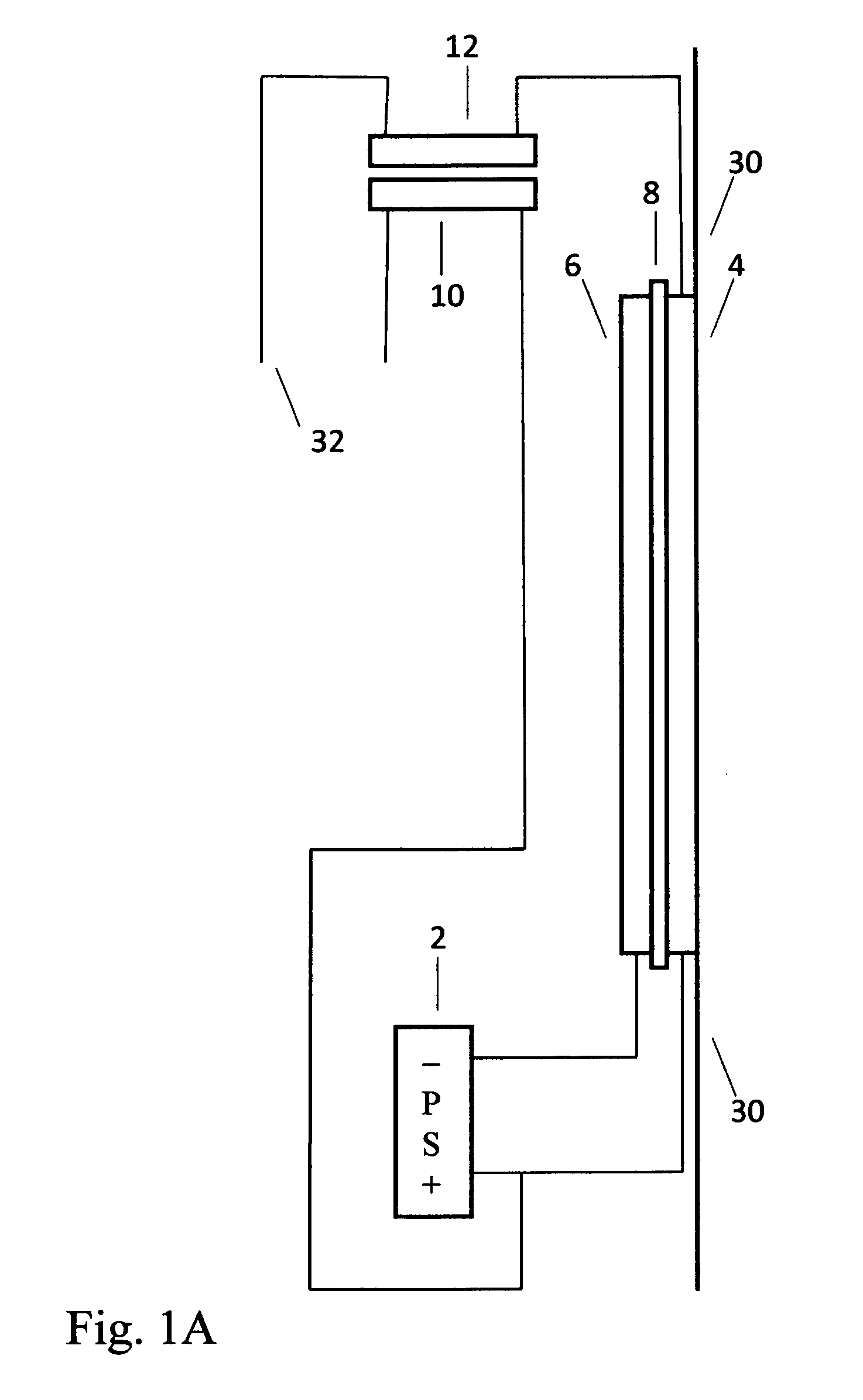Process for the production of electric energy for spacecraft utilizing the collection of charged particles in space
a technology of electric energy and spacecraft, applied in the fields of nuclear engineering, transportation and packaging, cosmonautic vehicles, etc., can solve the problems of limited electric energy available, additional limitations placed on the electrical systems of the craft, and limited electric energy availabl
- Summary
- Abstract
- Description
- Claims
- Application Information
AI Technical Summary
Benefits of technology
Problems solved by technology
Method used
Image
Examples
Embodiment Construction
FIGS. 1A, 2A, 3A, 4A, 5A, 6A, 7A and 8A—Variations of Embodiments
Description—FIG. 1A
[0077]FIG. 1A shows one variation of the basic components of an embodiment coupled with a schematic diagram indicating their relative position within an electronic circuit. The components include a power source, part 2, with the negative terminal connected to the negative field plate, part 6, while the positive terminal is connected to the positive field plate, part 4. The parts 6 and 4 are in fact the negative and positive plates of a charge segregation and storage assembly, respectively.
[0078]As shown, the positive field plate 4 is connected to the power source 2 and to the negative field plate 6. The basic circuitry is shown with this figure. The positive induction plate 10 also connects to the power source 2. Just as with the positive field plate 4, when the power source is activated, electrons are removed from the positive induction plate 10 and transferred to the negative field plate 6. The pos...
PUM
 Login to View More
Login to View More Abstract
Description
Claims
Application Information
 Login to View More
Login to View More - R&D
- Intellectual Property
- Life Sciences
- Materials
- Tech Scout
- Unparalleled Data Quality
- Higher Quality Content
- 60% Fewer Hallucinations
Browse by: Latest US Patents, China's latest patents, Technical Efficacy Thesaurus, Application Domain, Technology Topic, Popular Technical Reports.
© 2025 PatSnap. All rights reserved.Legal|Privacy policy|Modern Slavery Act Transparency Statement|Sitemap|About US| Contact US: help@patsnap.com



